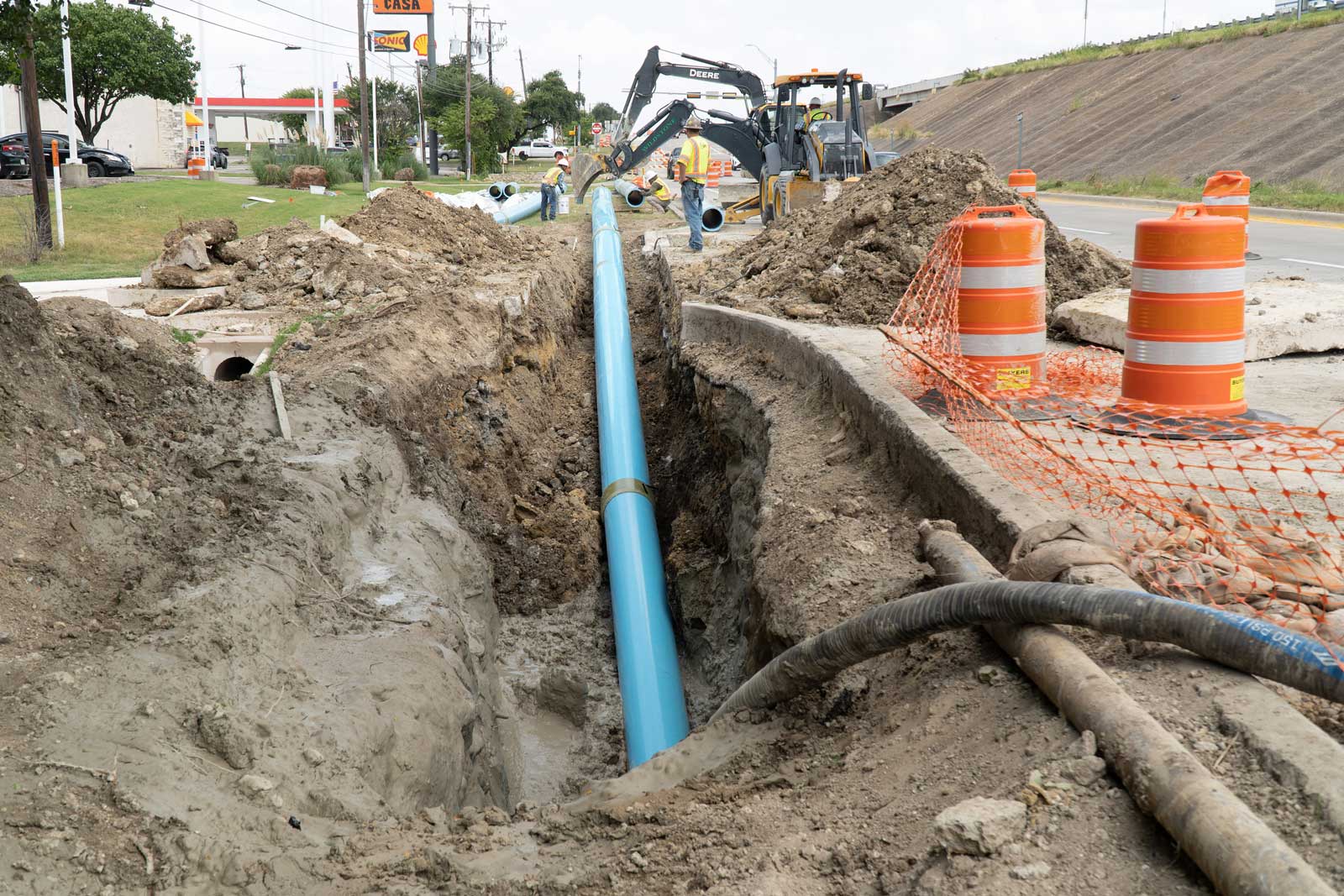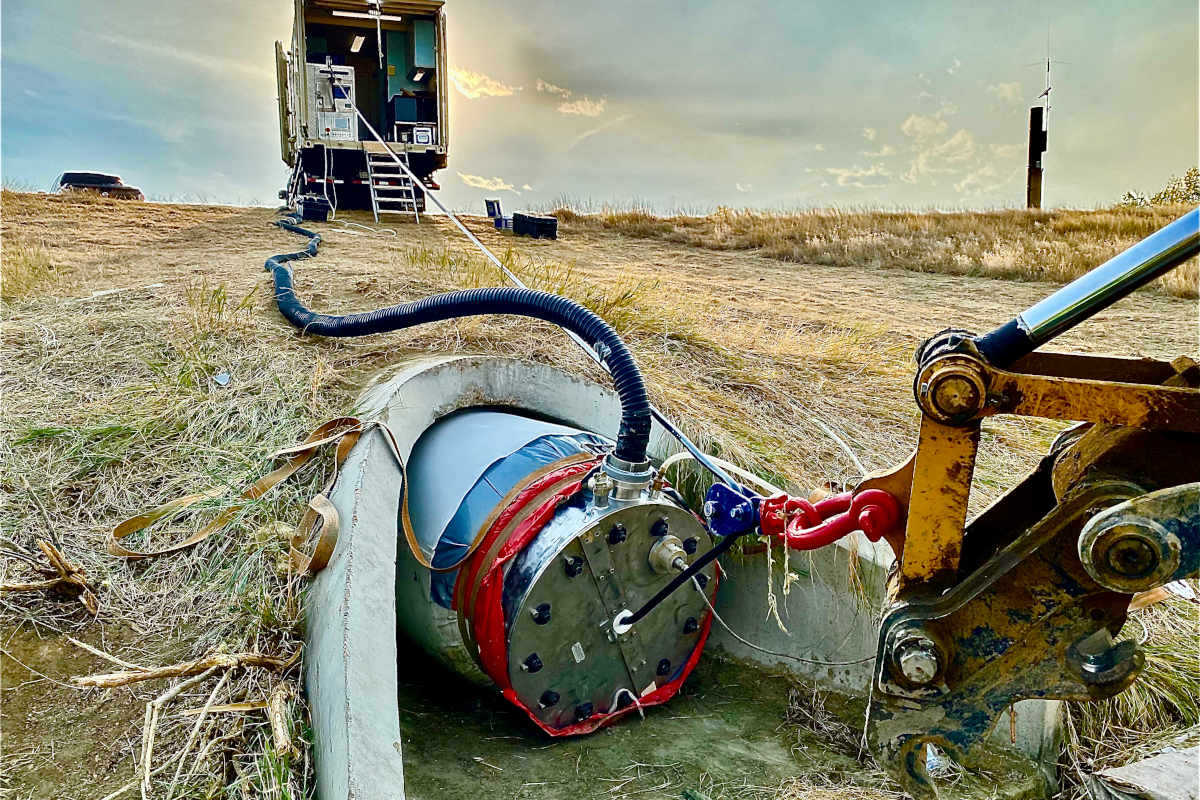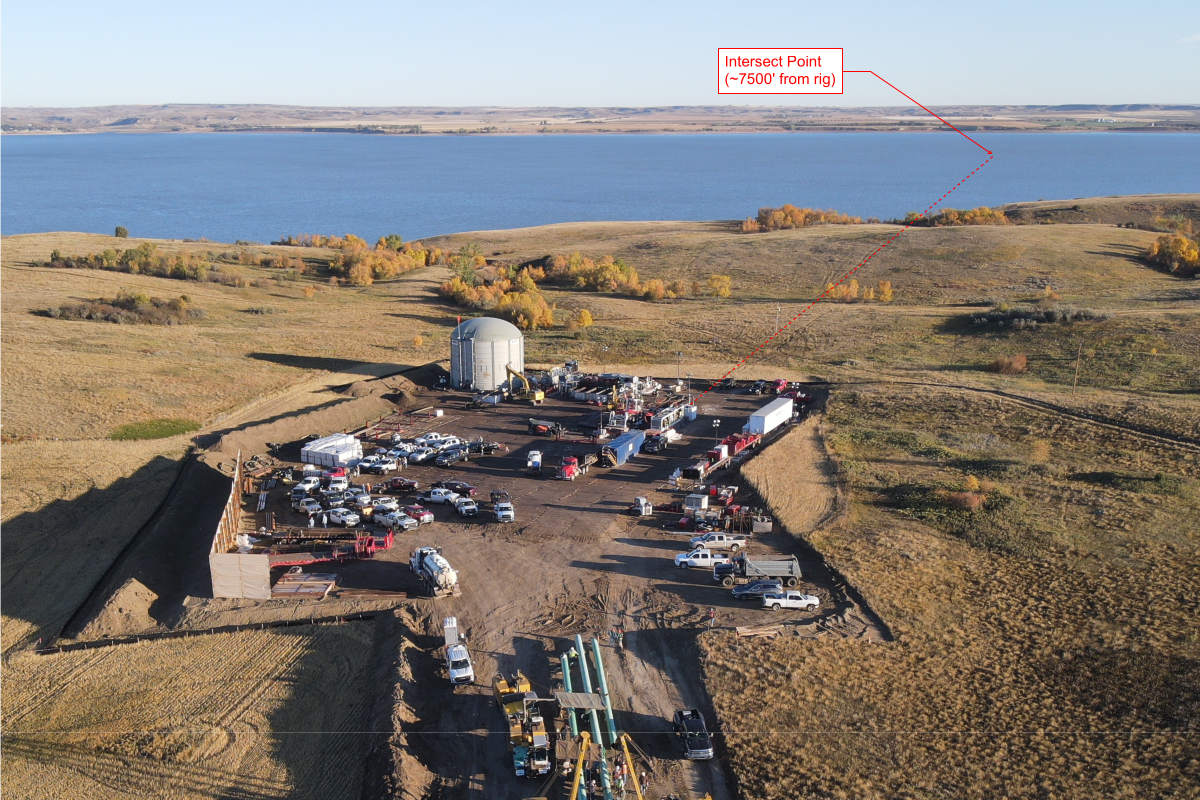
Rock Bore Using HDD, Open Cut, and Carrier Pipe Construction Using Segmented PVC Pipe
Two communities near Fort Worth, Texas, were facing a potable water demand that was outpacing the available water resources with their current systems. An additional secondary water supply was needed, and the installation of a new pipeline was vital to supporting the new water delivery to the cities. The design engineer on the project was tasked with constructing a new waterline that would connect to future delivery points and choosing the right construction methods for the geologic and space restrictions imposed, hard soils, TxDOT ROW, and the environmental challenges of road, river, and stream crossings.
The city of Willow Park and the city of Hudson Oaks are urban areas located west of Fort Worth, Texas. The total population size for both cities is around 8,900, with both experiencing booming growth. To support the communities with a sufficient water supply, the cities entered into an inter-local agreement to receive wholesale water from the city of Fort Worth. To deliver the water, the project estimated at $3.95 million, required the installation of a new pipeline which called for innovative engineering solutions. Notable challenges included:
- Coordinated Space Usage: The project involved multiple contractors and drilling companies, necessitating efficient space management for both open-cut and trenchless portions.
- Drilling through Sand, Cobble, and Limestone: The presence of all three soils in a single bore posed a significant challenge for the HDD method, requiring specialized drilling techniques and equipment.
- Challenging Project Layout: Constrained work zones and high project visibility led to a lack of laydown room for fused pipe solutions, necessitating innovative approaches to pipeline assembly.
- Varied Soil and Rock Properties: Each trenchless bore encountered different soil and rock properties, leading to challenges in selecting appropriate directional drill fluid and containment methods, especially in environmentally sensitive water crossing areas.
The cities of Willow Park & Hudson Oaks also wanted to maintain a PVC pipe system to match their existing water system pipe to reduce maintenance costs and eliminate the need for extra inventory and specialized adapters.


The project required the construction of a 3.4-mile pipeline located along the westbound frontage road of Interstate Highway 20, bridging the gap between El Chico Trail in Willow Park to Ranch Oak Drive in Hudson Oaks.
The engineer on the project, Halff Associates, chose Horizontal Directional Drilling (HDD) as the best trenchless method to install the new PVC pipe under Clear Fork Trinity River, a major river fork, and through several creek bores. HDD mitigates construction impacts when it comes to deep creek bores offering several advantages in terms of safety and environmental protection: avoids disturbance of the creek bed and banks reducing the risk of erosion, prevents sediment and soil pollutant discharge, preserves the natural habitat, and lowers the impact on the surrounding communities. HDD is also a good choice for installing a new pipeline within an existing right of way or easement without having extensive excavation as required by open-cut construction, ultimately reducing surface disruption. Overall, HDD allows for faster production time, reduction in greenhouse gases, and reduction of impacts on the local community. An HDD design can also overcome a variety of difficult ground conditions with potential environmental impacts:
- Bore path line and grade to allow constructible pipe entrance/exit angles.
- Assembly areas for the pipe.
- Depth of cover to reduce inadvertent returns (frack-outs) and reduce the disruption to the local community.
The project was funded by the Texas Water Development Board, Drinking Water State Revolving Fund.
The project layout restrictions for the trenchless project were successfully addressed with Halff Associates specifying integrally restrained segmented 16-inch Certa-Lok® RJ DR14 from Westlake Pipe & Fittings. The segmental Certa-Lok PVC pipe eliminates the need for staging areas required by fused pipes, and Certa-Lok can be assembled cartridge-style, with pipe being assembled during pullback. Certa-Lok can be assembled in pipe segments as little as 10 feet, or the contractor can pre-assemble the entire length of the bore. The DR14 was specified to withstand installations at deep depths to meet project design pressure requirements and to match the Fort Worth system which runs DR14. The bore lengths were 1,069 LF, 620 LF, and 379 LF, with ground conditions a mix of hard rock-limestone, and the creek bore with a mix of sand, cobble, and limestone.
The first step in the HDD design is the engineering review of existing as-built drawings, subsurface utility engineering (SUE), and the collection of easily available subsurface conditions. Based on the results of the review, Halff Associates developed a proposed bore path avoiding existing adjacent and crossing utilities, allowing for sufficient construction staging and mitigating environmentally sensitive areas. The proposed bore path was handed off to the contractor to plan the next steps, including the layout of work areas to stay within the project construction and utility easement restrictions. The contractor then developed a constructible bore line and grade that met project regulatory conditions and the long-term operation and maintenance design criteria. CJB Construction, selected by General Contractor, Wildstone Construction, mobilized equipment to the site to execute the horizontal directional drilling and pipe pullback. Materials on the site included: 13,782 LF of 16-inch C900 Certa-Lok DR14, IB, for open cut; 2,068 LF of 16-inch C900 Certa-Lok DR14, RJ, for HDD; 1,997 LF of 16-inch C900 Certa-Lok DR14, IB, carrier pipe with steel casing.
The open-cut 16-inch Certa-Lok C900 IB PVC pipe was installed at a standard depth of 4 feet. The HDD drill path needed to tie the trenchless pipe into the open-cut pipe at the 4-foot depth. The Willow Park crossing included varying topography with a deep river crossing. The designed bore path avoided disruption to the local community and mitigated environmental regulatory conditions regarding disturbance to the riparian environment. The HDD machine utilized was a Vermeer D100X140 equipped with a mud mixing system and a recycler system. The pilot bore bit size was 5.5 inches and was immediately followed by a 30-inch diameter hole opener. Drill rods consisted of 20-foot long by 3.5-inch diameter Vermeer Fire Stick 1 drill rods. The guidance assembly was attached to the back of the bit. Guidance was provided by a DCI DigiTrak Flacon F5+ Transmitter system capable of locating the tracking transducer to depths of 180 feet.
The longest bore was the most challenging, with sand transitioning to cobble and finally limestone underneath the river. The two remaining bores hit limestone at a very shallow depth. The major river crossing encountered limestone at this site consists of a marine sedimentary rock composed generally of calcium carbonate. The second and third bores consisted primarily of limestone.

The main benefits of segmented pipe include: reducing project layout, eliminating fusion, and reducing the Poisson effect compared to other trenchless solutions. The bores were at 3 different locations throughout the project; the 1,069 LF and 600 LF bores had several relief pits where inadvertent returns or frack out could be contained and collected. Frack-out occurs when the pressure from injecting the mud exceeds the capacity of the soil to handle the mud pressure and releases the mud. The path of least resistance for frack-out is up from the bore. These dedicated frack-out pits reduce the chance of frack-outs by controlling the location of where each pit is located in relation to the bore. For instance, the 1,069 LF river crossing had two dedicated frac-out pits before the river crossing, which allowed an escape for the directional drill fluid and reduced the chance of the material seeping into rivers or other areas of the installation.
Once the hole was drilled and swabbed to verify that cuttings had been removed, the pull head was attached to the 16-inch Certa-Lok. The puller head was attached to the Certa-Lok joint via a nylon spline, providing a 360-degree lock. After Certa-Lok was attached to the pull head, a ramped entry pit was constructed to insert the pipe at the appropriately controlled vertical bend radius. Certa-Lok was assembled in strings of between 80 LF to 200 LF at a time, depending on the available laydown room; the 1,069 LF had enough layout for a longer assembly of segmented pipe compared to the shorter bores.
The installation of the Certa-Lok segmented pipe was deemed a success by the design engineer, general contractor, HDD subcontractor, and municipality. Feedback included how easy it was to keep the job site footprint from impacting local businesses and how the cartridge-style method was simple, fast, and without the need for specialized fusing training and equipment. One of the keys to ensuring the project went smoothly was teamwork. The contractors worked with the pipe manufacturer, Westlake Pipe & Fittings, and with the design engineer to verify allowable bending. An important example occurred when CJB Construction found fiber cable in the alignment, and a re-design was needed to keep the project on schedule. Overall, those who developed the project were pleased with the results.






